
A balanced life style is important for anyone who is suffering with chronic inflammation. Eating right, getting plenty of rest, lowering emotional stress levels, drinking plenty of pure clean water and getting moderate exercise, are all important elements in helping to combat inflammation in the body. The question is what kind of exercise and how much.
Read on to find out the important relationship between chronic inflammation and exercise.
Strenuous exercise
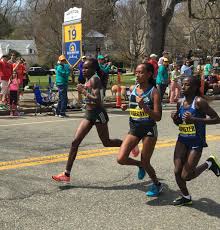
Strenuous exercise can often be invigorating and fun, however it causes inflammation in the body. Micro tears occur in the muscle fibers causing an inflammatory response in the body. This inflammatory response is the first stage of the recovery and healing process, rebuilding the muscle tissue by an influx of blood to the area and thus building stronger muscles.
Too much strenuous exercise over a prolonged period of time can degenerate the body however.
Rest is an important part of that recovery process. Rest can mean not only rest as we know it; sleeping, reclining, napping, not exercising, and restorative yoga, but also active rest which is a form of exercise that helps in the recovery process, like a gentle walk, bike ride, or swim. These types of exercise done gently can help in the recovery process by flushing out lactic acid (a bi-product of strenuous exercise that makes you feel sore) as well as bringing blood to the muscles to help them heal.
Of course most of us who have to deal with chronic inflammation don’t feel much like strenuous exercise. We have a hard enough time with physical activity and often tempted just to skip exercise all together due to pain. The benefits of moderate exercise and a good stretch routine can actually help us to feel much better.
Types of Exercise that help with chronic inflammation
Depending on what an individual has going on physically will determine what type of exercise can be done.
Four types of cardio vascular exercise that can be gentle enough and yet still effective are walking, biking, swimming, or hand biking.
For someone who has pain in the feet, knees or hips, walking for exercise may not be an option. In this case biking, swimming or hand biking might be an option. Biking for some with knee issues feels great and for others, not so good. You have to try it out and see what works for you.

Another great form of exercise besides swimming that can be very beneficial since it’s non-weight bearing is water aerobics. Many community pools and gyms have a water aerobics schedule. What’s additionally beneficial about this type of exercise is that it can be an overall body workout that offers a cardio as well as a resistance workout.
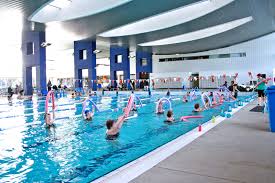
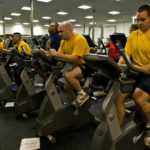
With regard to biking, I would recommend a stationary bike either at home or at the gym. The bikes at the gym are desirable since they are computerized and inform while you ride, how many calories you are burning, heart rate, as well as having the ability to increase the intensity as you begin to feel stronger.
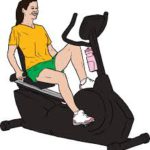
Most health clubs or gyms offer upright or recumbent bikes for those participants who suffer from low back issues.
You can also find a hand bike at many gyms. This is a great exercise so long as you don’t have any issues with your hands, elbows or shoulders.
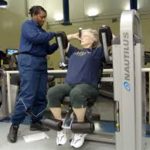
Moderate weight lifting is an important component to an exercise regimen as it helps to strengthen the muscles that surround inflamed and arthritic joints, lessening the discomfort in the joints.
Beginning at approximately the age of 30 we begin to lose 3 to 5% muscles mass per decade if we are inactive. Studies have shown that men will lose up to 30% of their muscle mass within their lifetime. Loss of muscles mass and strength can lead to other problems to the aging population such as falling. Weight lifting helps to increase bone density which is very beneficial for the aging population as it strengthens bones decreasing the potential for fracture.
Many gyms offer an introductory session with a membership to show you how to use the equipment. I recommend using the machines as most of them help the participant use the proper form when performing the exercises. Stick with light to moderate weight that you can push or pull for 15 to 20 repetitions when you’re first starting out. a strengthening workout regimen is best when done 3 times a week.
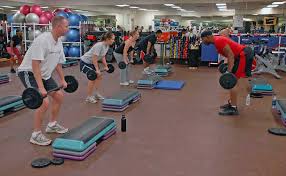
If you join a gym, you will most often find strength classes where hand weights, resistance bands and body weight are used to perform the exercises. Be sure that which ever class you decide to participate in is for your fitness level as you want to avoid injury, avoid getting discouraged and you want the class to help you feel better, not worse.
How to get started
It’s important when starting any kind of exercise regimen that you talk with your doctor about what you are planning to do and get his/her approval. It’s also important that you speak with the instructor or trainer who is leading the class and tell them about your situation so they can help you modify any movement that could be either be difficult for you to perform due to your condition or potentially problematic.
First, lets get started with the cardio. Figure out what you think you’d like to do and then give it a try. Commit to 15 to 20 minutes the first time you get on the bike, go for a walk, or take a swim.
If you’re feeling fine after the first few minutes and the second few minutes, then keep on going until you are finished with the whole session you committed to.
If at any point during your exercise regimen you feel dizzy or short of breath, stop what you are doing. Consult with your doctor before proceeding with any exercise regimen.
Commit to taking a walk, going to the gym, or visiting the pool 3 times a week to start. Gradually increase the amount of time that you are exercising, before you increase the intensity. Once you get through the first two weeks, go ahead and add 2 to 5 minutes to your regimen.
To begin a weight training regimen, I would suggest, as I mentioned before, to take an introductory lesson on how to use the equipment since proper form and use of the equipment is very important in your progress. My recommendation to you is to work with the weights 3 times per week. Work lower body muscles one day then upper body muscles the next, alternating with each workout. Always warm up before your weight workout with your 15 to 20 minutes of cardio exercise.
The Importance of stretching
Stretching is most important to help prevent injuries but also to help in the prevention of degeneration. The aging body is losing muscle mass and getting tight and inflexible as the years go by. This is why it is so important to do strengthening workouts as well as stretching or yoga. Tight muscles help to increase the degenerative process pulling joint surfaces together. Stretching elongates muscle fibers, stimulates blood flow which helps in decreasing pain and stiffness.
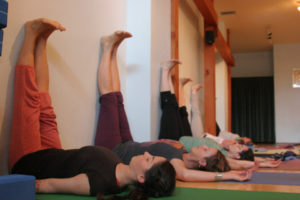
In a perfect world, I would recommend a comprehensive stretching regimen 3 times per week. An optimal workout regimen would be cardio and weight workout 3 days a wee with a day in between for recovery and comprehensive stretch or yoga class 2 days a week on your days off from weight training.
Ideally, some kind of stretch routine should be incorporated into your daily schedule in order to keep you moving forward, in the direction of greater flexibility.
Conclusion
Whether you’ve been fairly inactive most of your life or an athlete, movement is imperative in the aging body, there’s no getting around it. The saying, “If you don’t use it you lose it,” is a reality. Sometimes it can be uncomfortable to exercise when first getting started, however the discomfort should not last long and the rewards are great if it means the difference between walking or not.
I have other posts that touch on nutrition and supplementation that can be helpful in dealing with pain and inflammation naturally, including a breakfast recipe.
Best foods to eat for inflammation
I hope that reading about the relationship between inflammation and exercise was informative and that you found it helpful
Let me know if you have any questions, or need any help with getting started with an anti-inflammatory program.
In good health,
DrDina:)


